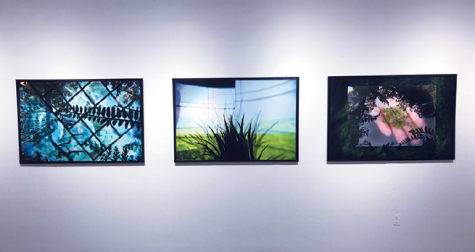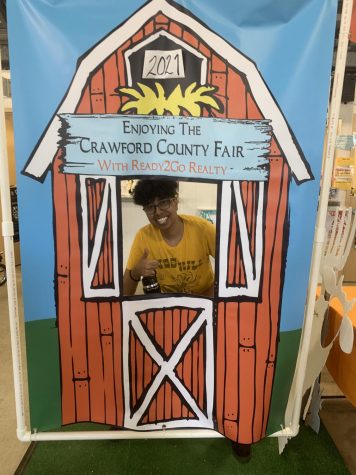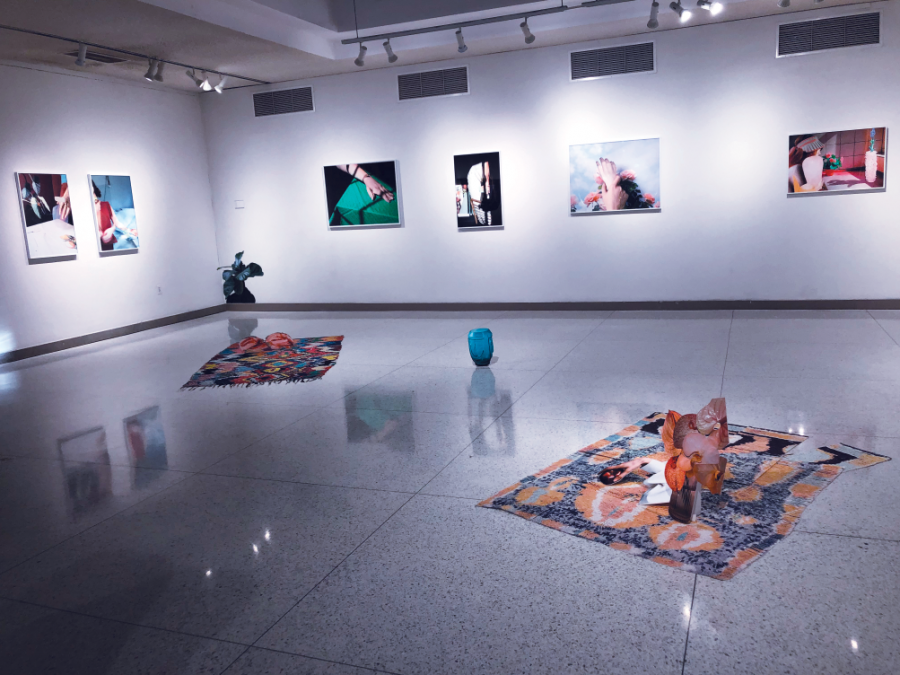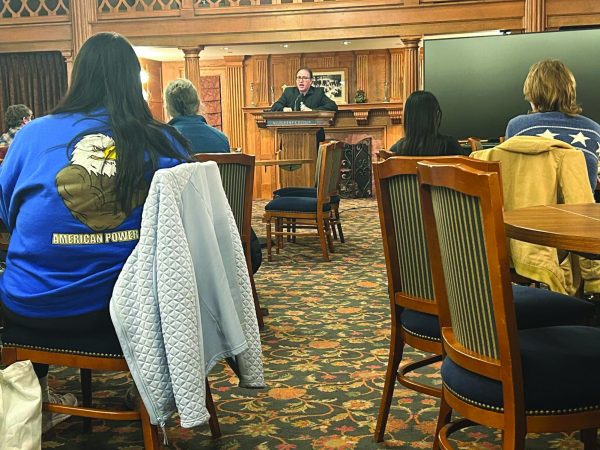Art gallery opens second exhibition: ‘Prune After Bloom’
Various artworks by Trisha Holt including the “Impossible Collection of the New” and “Hold Still” which are on display currently.
In 2004, Martha Stewart was convicted of felony charges of conspiracy, obstruction of an agency proceeding and making false statements to federal investigators, which resulted in her being incarcerated for five months. She is also an unexpected influence for some of the pieces seen in the latest Allegheny art gallery, “Prune After Bloom.”
The name of the gallery itself comes from a saying that Stewart herself espouses of killing off the old flowers in a garden to promote new growth. The gallery opened on Sept. 27 in Doane Hall of Art.
“‘Prune After Bloom’ brings together artists who explore gendered power dynamics that link desire, technology, bodies and lived environments,” a flier available at the event explained.
Three artists’ work were presented at the gallery: artistic duo Barrow Parke, photographer and performance artist Trisha Holt, and Allegheny’s own Heather Brand, Assistant Professor of Art.
Barrow Parke is a New York based artist duo comprised of Mark Barrow and Sarah Park.
“Barrow Parke … really (thinks) about this history of representation and desire, and they’ve designed this wallpaper for the show, and it evokes handprints on cave walls, so the very first representations is desire to infringe this indexical trace of your own presence on a wall,” Assistant Professor of Art History Paula Burleigh said about one of the duo’s pieces which appears like wallpaper behind some of their other work.
“They have these big bulbous lines that kind of look like finger swipes, and they start by making those as digital drawings on an iPad,” Burleigh said. “So they’re drawing on the iPad in action that’s of kind of like those first (cave) hand prints; just like this desire to make a mark with your hand, it’s really primordial in a way. Then they translate those into a program that puts it into a loom, and so then it’s woven and then they’re painting on the surface of the weave, so it’s really complicated process that goes back and forth between the analog and the digital to the point that they’re totally intertwined.”
The Barrow Parke pieces chosen for this gallery dealt to an extent with the idea of desire, particularly for the female form as seen in the other wallpaper which depicts a sort of tessellation of disembodied female legs, wryly referencing the old saying “She’s all legs.” However, their work was not the only art in the exhibit that dealt with the ideas of desire.
Trisha Holt’s art was produced by taking images from the internet of different objects and collaging them in her studio before rephotographing them with live bodies, juxtaposing these real bodies with these pictures of objects and things. This blurs the line between what is real and what is manufactured within internet spaces while simultaneously contrasting the real with what is manufactured online, which can be seen in how the objects are presented with pixelation and distortion.
Brand’s contribution to the gallery is found in nine of her photographs which are part of the series she calls “Close Enough.”

“My process for this specific body of work involved watching sort of lawn care videos on YouTube or old reruns of like Martha Stewart’s Martha Stewart Living and other various interviews that she’s done… My work generally deals with containment of natural environments or these built worlds that we exist within and have the sort of limitations and those worlds become our new normal. And so I started playing around with that idea and typically I would go to natural history museums and botanical gardens places that are a little bit more obviously built or constructed environments that are meant to contain. (However) these photographs are all taken up against a screen. In some cases I have two or three screens present like a tablet, a phone and a computer all at once, and many of them are time lapse or long exposure photographs, which really just means that I’m playing a video, or maybe a couple of videos at the same time and leaving this shutter open to make a blurry or more complex layered aesthetic … I just think that that sort of interaction was really, really interesting and that there’s such a wealth of information online, and that they got me thinking about this mediation, where it’s a very literal mediation of the screen,” Brand said.
Brand’s contribution to the gallery was created during the pandemic and dealt with the very familiar ideas of existing within a confined world, due to lockdown, and experiencing the outside world primarily through screens. The other artists also had works created during the pandemic.
“I don’t think there’s a return to normalcy, I don’t want to necessarily suggest that these are all works about the pandemic,” Burleigh said. “For instance Barrow Parke’s paintings range from 2015-17, whereas the wallpaper is 2021, so some of those works are pre-pandemic. Trisha’s works range, some were made this year during the pandemic some before others were all made during the pandemic, they’re all summer 2021,” Burleigh said.
There is a variation in the degree that each artist’s work engages with the pandemic, however there is a focus on the domestic sphere across the art in the show.
“Since we’ve (all) probably spent more time than usual in our domestic sphere … the economy shut down, we couldn’t go to work, those kinds of things,” Burleigh said. “But I think, you know, I mean in terms of returning to normalcy I’m thrilled we can have in person open openings again. I hope we can offer free wine again soon. That’s not a reality right now but I’m very excited that members of the public can come in again because we’ve, you know last year we can only open it to Allegheny visitors and it’s really important to me that the gallery function is kind of a cultural space that everyone in the surrounding area has access to. So that’s a really nice change so I don’t think we’re back to normal but we’re getting there, which is exciting.”
“Prune After Bloom” is on view from Sept. 29 to Nov. 13, with a virtual artist discussion panel discussion Tuesday, Oct. 12, from 5:30 p.m. to 6:45 p.m.

Mo is a sophomore from Columbus, Ohio. He is majoring in English and possibly minoring in JPI and/or Political Science. He is the Features Editor and this...








